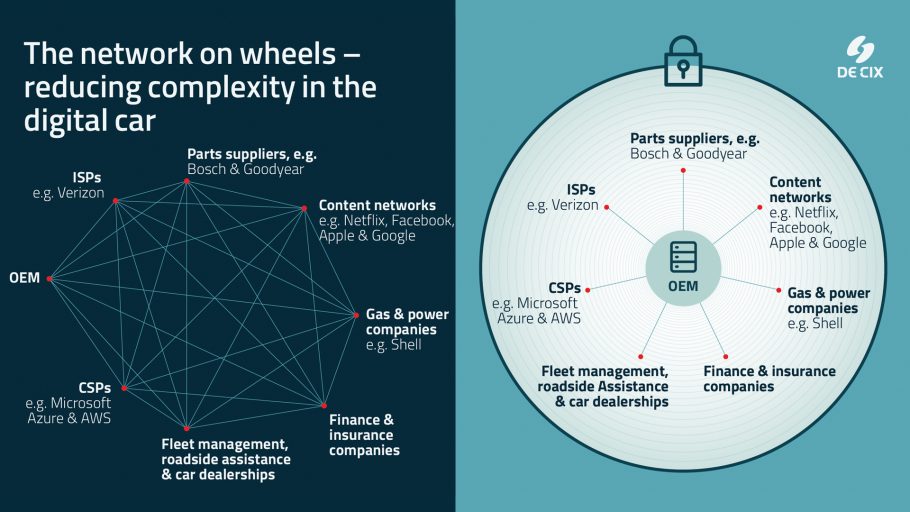Industries worldwide are entering a new era of digitalization, everywhere, for everything, making performance, resilience, and security in network connections business-critical. Enterprises from segments like healthcare, finance, retail, logistics, and automotive are discovering the benefits of connecting with their digital value chain via an Internet Exchange (IX).
While IXs have traditionally been seen as locations where telecommunications companies, ISPs, content networks, and CDNs interconnect to exchange data, we now see an increasing number of participants joining from other industry segments, like automotive. An early adopter, the automotive industry has already started benefiting from interconnection over IXs.
The digital car is a prime example of a digital product – one where the manufacturers cannot afford to cut corners on the performance, resilience, or security of their networks. The efficacy and the privacy of their connections to other networks are paramount to the provisioning of the many services and features that define the digital car. Any lapses will affect the reputation of the car brand.
Joining the platform economy
At the same time, the new era of digitalization means that digital business models based on the platform economy can have distinct competitive advantages for globally acting enterprises, beyond the capabilities of traditional industrial setups. New players are presenting a clear challenge to the conventional automotive sector – e.g. in the area of autonomous driving and car applications. Car manufacturers need to shore up their space in the platform economy and interconnect with their suppliers, service providers, and customers in new and optimized ways to control the data journey of their cars.
Interconnecting with partners via an IX enables aggregation in an improved latency (response time) to the location of the car, and therefore with improved stability. By choosing an IX that already has an established and vibrant ecosystem of diverse networks, a car manufacturer can be right on the spot, where the digital economy of the future is being molded. Automotive networks can thus meet in the most direct and shortest way with all the data suppliers and buyers that are important to them – and those that in future are likely to become important. With a direct interconnect, coupled with a Closed User Group (CUG) specifically designed for enterprise interconnection, the connection on the network side can be ideally optimized, reducing latency to the other provider networks and data centers involved.

Creating Interconnection Ecosystems For Industries – The Digital Car As A Model
We see three overriding challenges that car makers are confronted with when exchanging vast amounts of data with many different partners:
1. the provision of services and features smoothly and with fast reaction times (dependent on the performance and reliability of the connectivity to other networks),
2. the fulfillment of compliance requirements for multiple regions around the globe where the car may be sold or driven (high levels of legal and regulatory complexity, increasing exponentially with the number of networks and service providers involved), and
3. the security of the network, in order to ensure that the car is protected from any form of unauthorized manipulation.

Previously, the automotive manufacturers’ approach was a best-effort solution involving Multiprotocol Label Switching (MPLS) and IP transit (upstream), with no end-to-end control of the traffic flows between the car and the networks delivering data to or receiving data from the car. This creates challenges for the networks: The more intermediaries between two networks, the higher the latency, the greater the risk of performance and security issues, and the more complex compliance becomes. Because if you do not control the data value chain, you cannot control any of this.
ABOUT THE AUTHOR
Ivo Ivanov is Chief Executive Officer of DE-CIX and Chairman of the Board of the DE-CIX Group AG. Prior to these positions, Ivanov was Chief Operating Officer of DE- CIX and Chief Executive Officer of DE-CIX International, where he was responsible for the global business activities of the world’s leading Internet Exchange operator. Ivanov has more than 20 years of experience in the regulatory, legal, and commercial Internet environment. Having joined DE- CIX in 2007, he has in recent years been deeply involved in the establishment of DE-CIX sites in North and South America, Southern Europe, the Middle East, and Asia, as well as several DE-CIX consultancy projects in Africa, Asia, and Europe.


